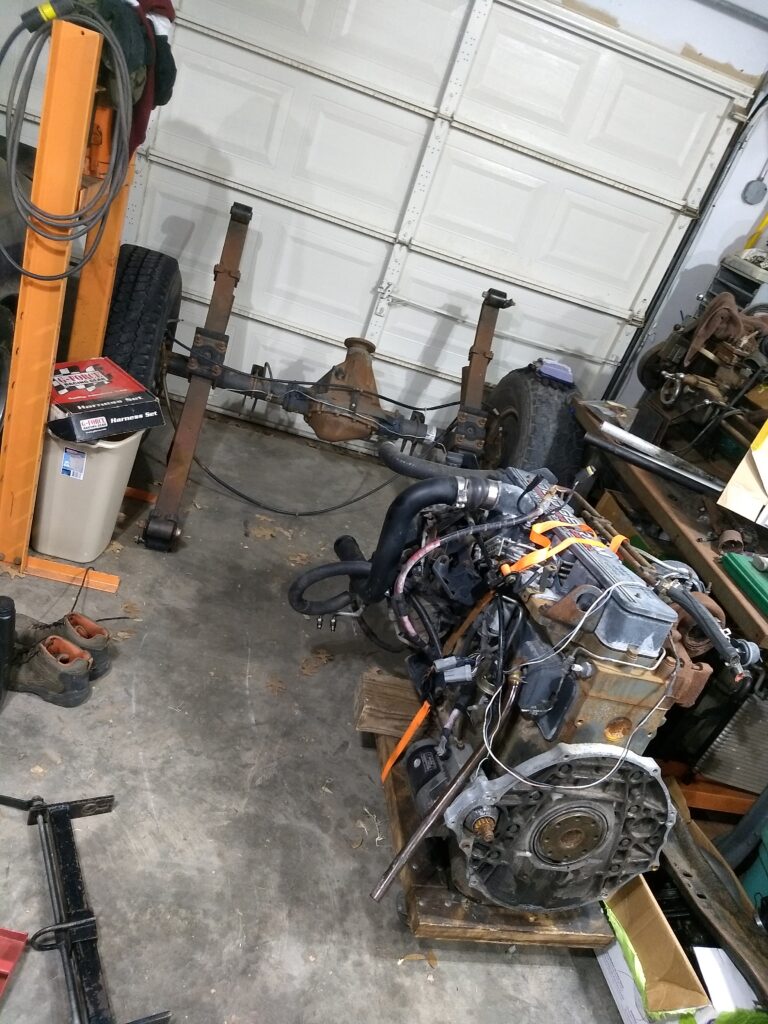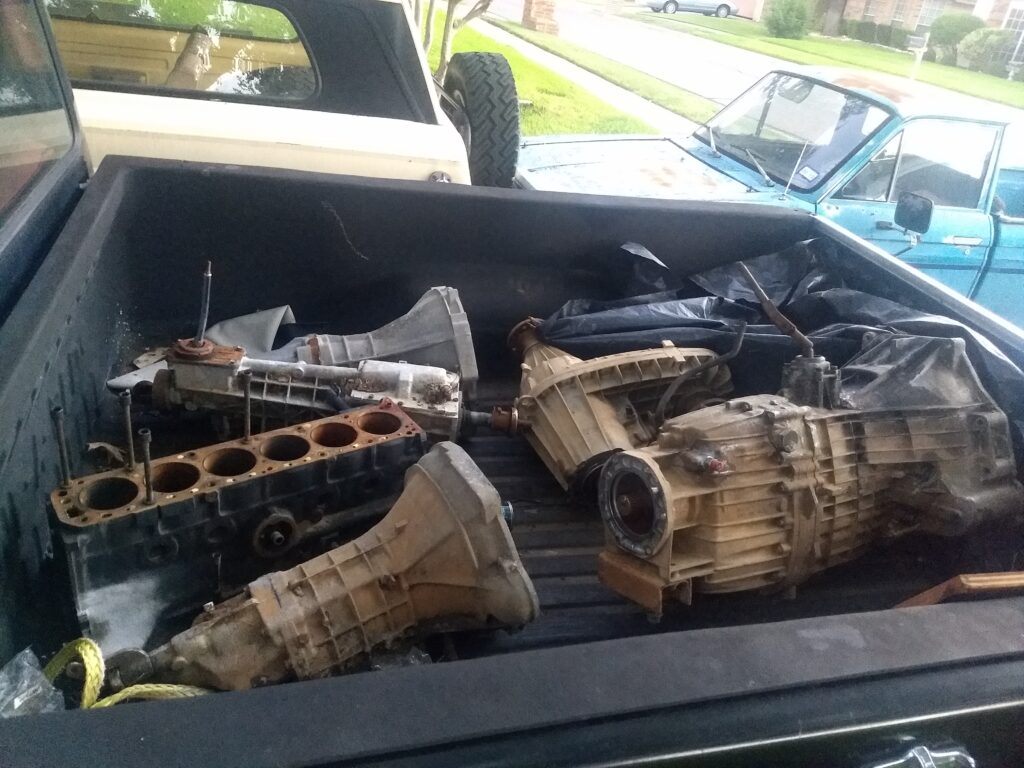Engine
Part of the trade study involved investigating engine swap options. I was not settled on using the AMC 360CI V8 gas engine. One of the basic tenets of the project was to have expandability and sustainability. While the motor has plenty of parts available and for cheap, I don’t know how long that part supply will last and how expandable the motor is. I never saw many go fast parts for the AMC 360 like I did on other American V8’s – not that I want to go fast, but I need to make enough power to tow and also hit my miles per gallon efficiency too. This truck will adventure in the Rocky Mountains occasionally where it will lose anywhere between 15 – 27% of its power output.
As mentioned in the Basic Tenets and Requirements page, there are several emissions implications when reviewing gas engines to swap. I would rather avoid these while also trying my hand at a diesel engine. Diesels aren’t held to the same stringent requirements, are generally simpler when it comes to electrical wiring, and many come with turbos. The turbos can help with the altitude problem and additionally, diesels are not as sensitive to additional boost like gas motors are. Diesels can typically be separated out into two primary categories; mechanically and electronically controlled. The “electronically controlled” tag is a broad description, their implementation varies. In short I wanted a mechanically controlled motor. I do not want the hassle of wiring in ECU’s and ensuring all their input requirements are met. I can speak more to this in its own designated blog post.
Available mechanically controlled motors were the Ford IDI, Chevy 6.2L, and the Cummins BT series. I will create a blog post to go over why I went with what I did but in short, I went with a Cummins 6BT. This motor is bullet proof out of the box, can easily make more power even with the “lesser” VE injection pump, and is a well known motor that has large product support that crosses industries being an industrial engine. Two major considerations will be the weight and the length of the motor. Below is the motor I sourced. I did not see it run so here is to trusting Joel, the goat farmer.

Transmission
I have the option between a manual and automatic transmission, where there are many more automatics to choose from. An obvious choice would be to use a Dodge transmission behind the engine that came in said Dodge. However… I haven’t a clue how well those transmissions held up and brief reading yielded unimpressive results. Some automatics are electronically controlled and therefore need interfaces with ECU’s and controllers which I had already ruled out. Lastly, to this day I still view an automatic transmission as a magical unicorn and not something I want to dive into at this moment. This leaves manual transmission options. It doesn’t have to be a Dodge offering, although that would be easy. You could get an adaptor plate to mount other transmissions.
Considerations need to be made for the transfer case that bolts to the back of the transmission (unless you want to use a divorced transfer case, needing one more driveshaft and additional mounting provisions). This vehicle is a system and therefore when you consider the whole system you will need to know which axles you will choose to help determine transfer case and subsequently what side will it drop on (passenger or driver side). More on that here: Jeep Suspension. In summary, I was going to need larger axles to support the weight of the new engine. Ford has done their setup roughly the same for decades, where the transfer case drops on the drivers side, and usually spline counts are similar between transfer case and transmission.
I will create a blog post on this subject to go over the trade but at the end of the day I settled with a Ford ZF6. I didn’t intentionally settle on this. I was content with a 5 speed option whether it was Dodge or Ford however in my late night browsing of classified ads I found a stellar deal on a ZF6 with transfer case (manual shifting transfer case I might add). This is going to have some potential risk in regards to physical size but I don’t foresee it being a major challenge. This will require an adaptor plate, so that cost needs to be included. In the meantime I continue to prowl for other transmission options but the sad reality is that these manual options are sold as swap kids for all the people who hate their automatics; perhaps a testament to why I didn’t go that route. The swap kits (containing all pieces necessary to move a truck over to manual) have been listed anywhere from $2000-$4000. At this rate I feel comfortable with the combination I have, even with the added cost of an adaptor plate. Below, on the right is the ZF6 and transfer case. I was not prepared for the size of this gearbox. On the left are 3 Datsun transmissions and a Datsun engine block for comparison. We drove several hours in a Nissan Versa to get this gearbox and when we arrived I realized my potential mistake. Luckily it fit…
